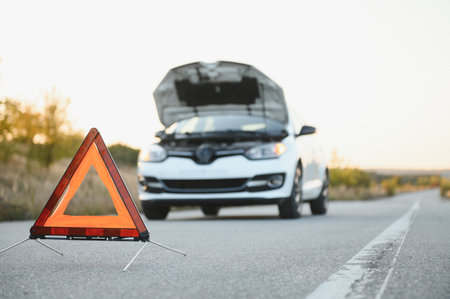1. Distracted Driving
Many new drivers tend to use their phones, adjust the radio, or get distracted by passengers. Staying focused on the road is crucial to avoiding accidents.
Common Distractions for New Drivers
Distractions come in many forms, and even a momentary lapse in attention can lead to serious consequences. Here are some of the most common distractions new drivers face:
| Distraction | How It Affects Driving |
|---|---|
| Using a phone | Texting or making calls takes your eyes off the road. |
| Adjusting the radio | Fiddling with settings diverts your attention. |
| Talking to passengers | Engaging conversations can be mentally distracting. |
| Eating or drinking | Handling food can make you lose control of the wheel. |
Tips to Stay Focused
To avoid distracted driving, follow these simple tips:
- Put your phone on silent or use a hands-free device.
- Set your GPS and adjust your music before you start driving.
- Limit the number of passengers in your car.
- Avoid eating or drinking while driving.
- Stay aware of your surroundings and keep both hands on the wheel.
Why Staying Focused Matters
Even a few seconds of distraction can lead to accidents. By paying attention and minimizing distractions, new drivers can improve their safety on the road and gain more confidence behind the wheel.
2. Improper Following Distance
Tailgating increases the risk of rear-end collisions. Maintain a safe following distance to allow enough reaction time.
Why Following Distance Matters
Leaving enough space between your car and the vehicle in front of you is crucial for safety. If you follow too closely, you might not have enough time to react if the driver suddenly stops or slows down.
Safe Following Distance Guidelines
A good rule of thumb is the “three-second rule.” Pick a stationary object on the road, such as a sign or a pole. When the car in front of you passes it, start counting seconds. If you reach the object before three seconds, you are too close.
| Speed | Recommended Following Distance |
|---|---|
| Under 35 mph | 3 seconds |
| 35-55 mph | 4 seconds |
| Over 55 mph | 5+ seconds |
Dangers of Tailgating
Following too closely can lead to serious accidents, especially in sudden braking situations. It also increases road rage incidents, as other drivers may feel pressured or stressed by tailgaters.
How to Maintain a Safe Distance
- Use the three-second rule as a basic guide.
- Increase distance in bad weather or low-visibility conditions.
- Stay alert to traffic patterns and adjust accordingly.
- Practice patience—rushing wont get you there much faster, but it can increase risk.
What to Do If Someone Is Tailgating You
If another driver is following too closely, avoid sudden braking. Instead, gradually slow down to encourage the tailgater to pass. If necessary, change lanes safely or pull over when possible.
![]()
3. Ignoring Traffic Signs and Signals
New drivers sometimes overlook stop signs, yield signs, or fail to obey traffic lights. Ignoring these important signals can lead to accidents and traffic violations. Always staying alert and being aware of road signs is crucial for safe driving.
Common Traffic Signs and Their Meanings
| Traffic Sign | Meaning |
|---|---|
| Stop Sign | Come to a complete stop before proceeding. |
| Yield Sign | Slow down and give the right of way to other vehicles. |
| Red Traffic Light | Stop completely until the light turns green. |
| Green Traffic Light | Proceed if the way is clear. |
| Yellow Traffic Light | Slow down and prepare to stop. |
How to Avoid This Mistake
- Stay Alert: Always pay attention to road signs and signals.
- Slow Down: If youre unsure about a sign, slow down and be cautious.
- Practice Regularly: The more you drive, the more familiar youll become with different signs.
- Take a Defensive Driving Course: These courses can help reinforce good driving habits.
Understanding and obeying traffic signs and signals is essential for every driver. By staying focused and following the rules, you can improve safety for yourself and others on the road.
4. Overconfidence or Nervousness
Some new drivers become overly confident and take risks, while others are too nervous, leading to hesitations. Find a balance by practicing in different driving conditions.
Overconfidence Can Lead to Risky Behavior
When new drivers gain some experience, they might start feeling overly confident. This can result in speeding, ignoring traffic rules, or making risky maneuvers. While confidence is good, overconfidence can be dangerous.
Signs of Overconfidence
| Behavior | Risk |
|---|---|
| Speeding often | Increases the chances of losing control |
| Ignoring stop signs and signals | Can lead to accidents at intersections |
| Following too closely | Less reaction time if the car in front stops suddenly |
Nervousness Can Cause Hesitations
On the other hand, some new drivers lack confidence and hesitate too much. Hesitations can be dangerous, especially at intersections or while merging onto highways.
How Nervousness Affects Driving
- Taking too long to make turns, frustrating other drivers
- Being overly cautious, slowing down traffic
- Struggling to merge onto highways, causing sudden stops
Finding the Right Balance
The best way to avoid both overconfidence and nervousness is practice. Drive in different conditions, including highways, traffic, and bad weather. With time, confidence will grow naturally without becoming excessive.
5. Five: Poor Parking Skills
Parallel parking, backing into a spot, and judging parking space can be challenging for beginners. Parking requires precision and spatial awareness, which take time to develop. New drivers often struggle with positioning their vehicle correctly or second-guess themselves, leading to frustrating parking attempts.
How to Improve Your Parking Skills
The key to mastering parking is practice. Find a low-traffic area, such as an empty parking lot, and dedicate time to practicing different parking techniques. Here are some essential parking methods to focus on:
| Parking Type | Description | Tips |
|---|---|---|
| Parallel Parking | Puling into a spot between two cars on the side of the road | Use reference points, practice turning angles, and take it slow. |
| Backing into a Spot | Reversing into a parking space to allow for easier departure | Check mirrors continuously and align with the parking lines before turning in. |
| Judging Parking Space | Estimating if a space is big enough and properly positioning the car | Practice eyeing the space before attempting to park; use parking lot markers to gauge size. |
Additional Tips for Better Parking
- Take your time—rushing leads to mistakes.
- Use mirrors and backup cameras but also turn your head for full awareness.
- Practice different scenarios, such as uphill and downhill parking.
- Be aware of your car size and turning radius.
Building Confidence in Parking
The more you practice, the more comfortable you will feel when parking in real-world situations. Start in open areas, then progress to tighter spots as your skills improve. With patience and repetition, parking will soon become second nature.


